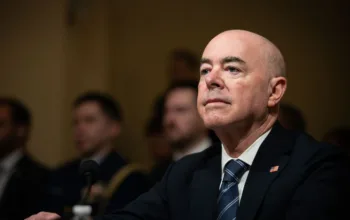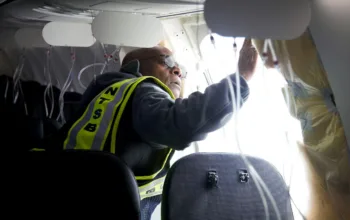Major reform on how the US gives money to other countries is breezing through the House with bipartisan support.
Today’s Congress is not exactly a well-oiled machine. Even picking a speaker has proven to be incredibly difficult for the House, which took as many floor votes on the matter in 2023 alone as in the previous 36 years combined.
But there’s one issue in which Congress has shown a surprising facility for bipartisan, bicameral cooperation: foreign aid.
Last year saw a historic deal to greatly increase funding for global health efforts, especially those targeting AIDS, malaria, and tuberculosis — which together kill some 2.5 million people a year — as well as new bipartisan legislation introduced to reform the way the US Agency for International Development (USAID), America’s leading foreign aid agency, works.
2024 promises more bipartisan collaboration on the issue. This past week, Reps. Sara Jacobs (D-CA) and Cory Mills (R-FL) and Sens. Christopher Coons (D-DE), Tim Kaine (D-VA), Joni Ernst (R-IA), and Pete Ricketts (R-NE) introduced the Locally-Led Development and Humanitarian Response Act, another measure to reform USAID. Introduced in the House on March 19, it already passed the Foreign Affairs Committee by a unanimous voice vote on March 20.
The bill is meant to push USAID to distribute more of its budget to local groups in the countries where it works. The basic case for using more local groups is simple. US aid spending currently goes largely to a small group of very large contractors that are insulated from evaluation and tend toward bloated programs.
Giving the money instead to small local organizations would not only help develop civil society in developing countries, but likely achieve better outcomes at a lower cost. A recent review by development research group the Share Trust estimated that funding aid through local groups is roughly 32 percent more cost-effective than funding groups based in rich countries, largely because salaries and overhead in rich countries are significantly higher.
This isn’t new: USAID administrators going back decades have promised more funding for local programs. Raj Shah, Obama’s first USAID administrator, had a push called “Local Solutions.” Mark Green, who led the agency under Trump, had the New Partnership Initiative, with similar goals.
Local funding, however, is still the exception. The agency distributed $38.8 billion in fiscal year 2022, or about $30 billion excluding Ukraine aid. But that same year, only 10.2 percent of funds went to local partners: “organizations, firms, and individuals based in the countries in which we work.” Current administrator Samantha Power has pledged to increase that share to 25 percent by next year and 50 percent by 2030, ambitious targets that will be challenging to hit.
The Locally-Led Development and Humanitarian Response Act is meant to move toward that goal by clearing out red tape, some of it imposed by past acts of Congress, to make it easier for small local organizations to apply for support from USAID. Specifically, it:
- Lets groups apply for money in languages other than English, sparing them translation costs
- Grants more flexibility in accounting systems, so groups using systems common outside the US can still apply
- Allowing late registrations on the System for Award Management, a federal government-wide platform for paying vendors
- Lets USAID missions restrict bids to local groups on projects costing up to $25 million; currently only projects under $5 million can be restricted to local groups
- Increases the share of grants allowed to be spent on administrative costs/overhead from 10 percent to 15 percent
The last bit, allowing higher overhead charges, may seem on its face like a problem. After all, money spent on overhead is money not spent on direct aid. But the change is meant to address an inequity in how local organizations are currently treated compared to big contractors.
Right now, small local groups “only really get 10 percent of the contract for overhead,” Rep. Jacobs said in an interview, “whereas big organizations negotiate larger overhead costs and get more money for overhead.” Boosting the share to 15 percent is meant to provide an equal playing field.
Erin Collinson, director of policy outreach at the Center on Global Development and a development policy expert not involved in drafting the bill, argues it would be a real step forward, highlighting the changes to the overhead rate (technically called the “de minimis indirect cost rate”) as significant. “These are very much things that the agency is trying to work through,” she said of the bill’s provisions. “It sends the right kinds of signals that Capitol Hill is on board with this.”
The bill has considerable civil society backing from groups like Catholic Relief Services and the Modernizing Foreign Assistance Network and is recent enough that I was not able to find any outright opponents. Existing vendors have natural reasons to fear the legislation, but they could also scheme to work around it.
Jacobs raised the prospect of large contractors hiring a token number of foreign workers, changing their names, incorporating small subsidiaries, and similar moves, to try to claim money being reserved for local groups. She concedes that USAID and Congress will have to exercise constant oversight to prevent these incumbent firms from undermining the reform.
But with the bill already through its House committee and garnering the backing of liberal Democrats and conservative Republicans in both houses already, Jacobs is optimistic. “We think it has a really good shot of becoming law this year,” Jacobs said. “I know many people don’t think we can get anything done. Hopefully, this is one proof point that we can still do some big things.”



